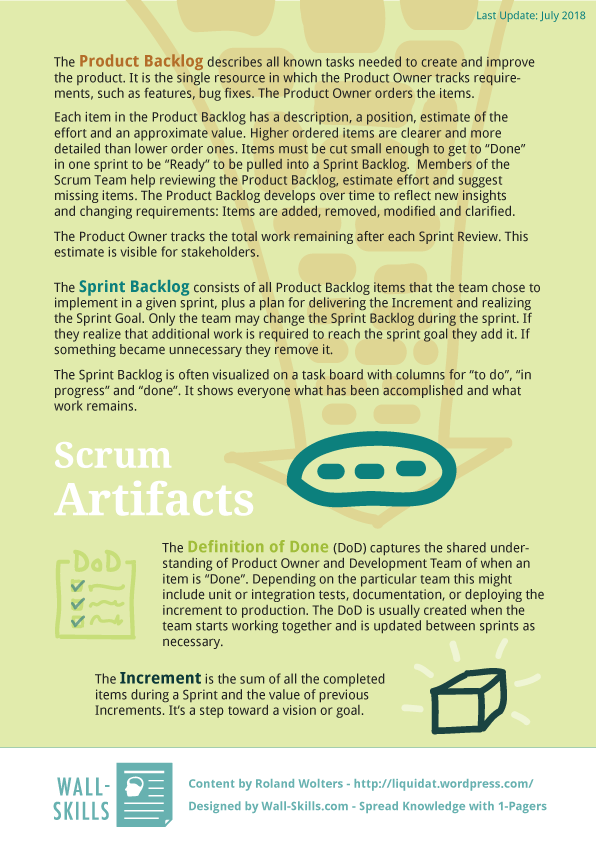The popular process framework Scrum has its own vocabulary. Here’s part 3 in a series of 1-pagers explaining Scrum words. Today we explain the Scrum Artifacts: What kinds of backlogs are there and what is a “Definition of Done”?
Main source was the Scrum Guide.
Are you a budding Product Owner? Check out our compilation "Skills for Successful Product Owners"
Content of the 1-Pager:
The Product Backlog describes all tasks needed to create and improve the product. It is the single resource in which the Product Owner tracks requirements, such as features, bug fixes, and non-functional changes.
Each item in the Product Backlog has a description, a position, estimates of the amount of work needed and an approximate value.
The Product Owner orders the items and makes sure that they are clear and reasonably sized. Members of the Scrum Team help reviewing the Product Backlog, estimate effort and suggest missing items. Since a product is never finished the Product Backlog develops over time: Items are added, removed, modified and clarified according to the changing requirements.
The Sprint Backlog consists of all Product Backlog items that the team chose to implement in a given sprint. The Sprint Backlog is often put on a task board with columns for “to do”, “in progress”, and “done”. Tasks in the Sprint Backlog are not assigned but “pulled” by team members.
Only the team may change the Sprint Backlog during the sprint. If they realize that additional work is required to reach the sprint goal they add it. If something became obsolete they remove it.
The Sprint Backlog is highly visible and shows everyone what has been accomplished and what work remains. Additionally the team estimates the remaining work effort during the Daily Scrum. This is often recorded with a burndown chart.
The Definition of Done (DoD) captures the shared understanding of Product Owner and Development Team of when an item is “Done”. Depending on the particular team this might include unit or integration tests, documentation, or deploying the increment to production. The DoD is usually created when the team starts working together and is updated between sprints if necessary.


Giles 2014/02/06
The first line of the second paragraph has a typo:
… has a descriptions
should be:
… has a description <-
corinna 2014/02/06
Hi Giles!
[x] Fixed
Thanks for the hint!
realmandydee 2014/02/07
Is it cool if I tweet about this blog post?
Roland 2014/02/07 — Post Author
Hej, of course, feel free. We also welcome feedback.